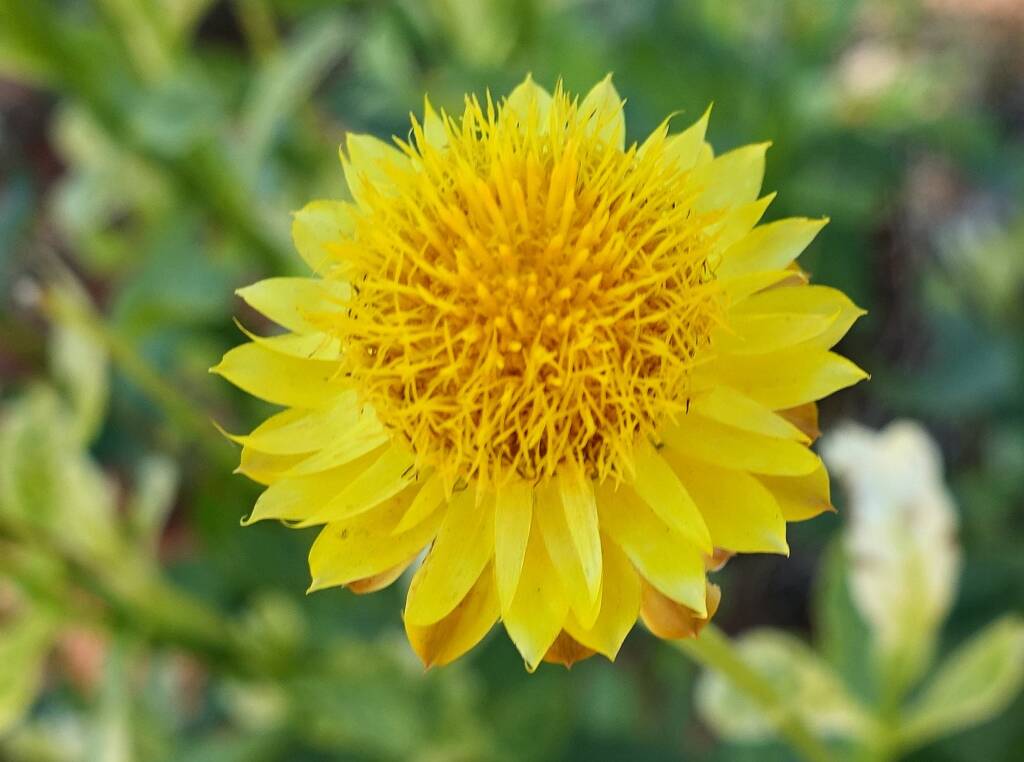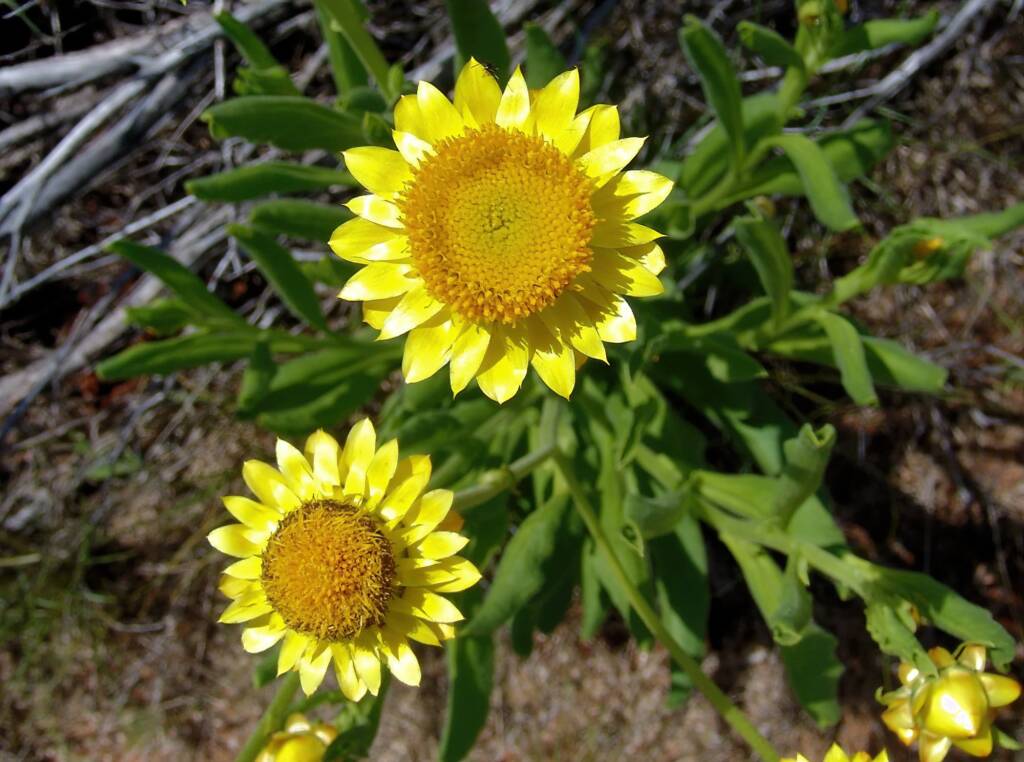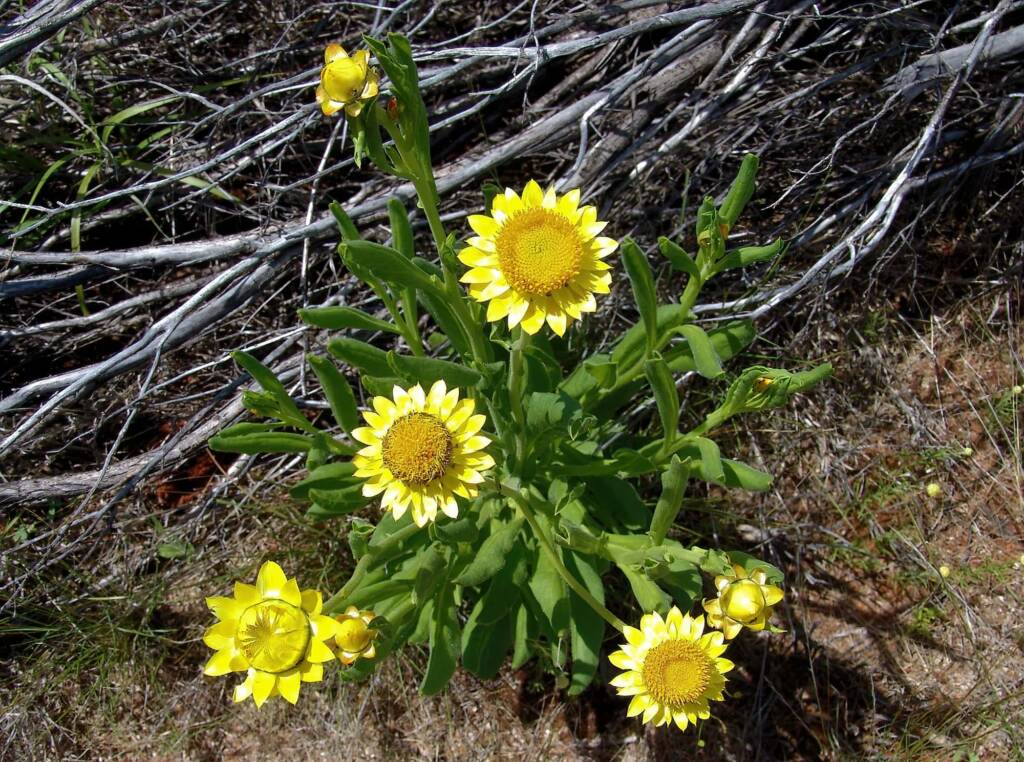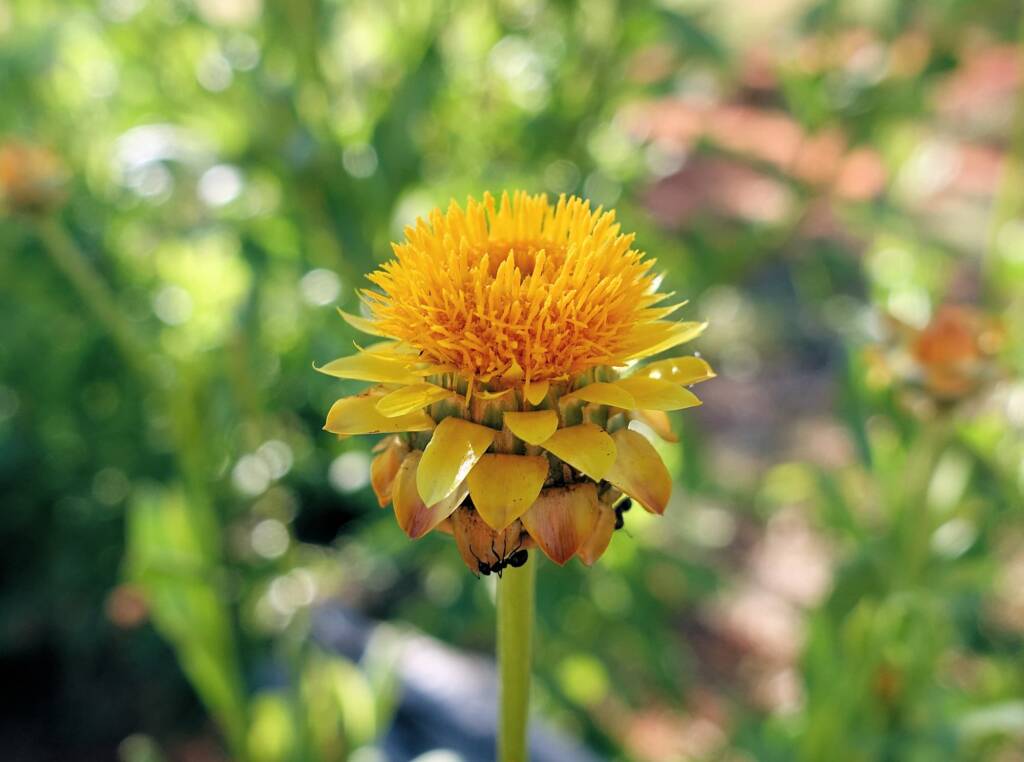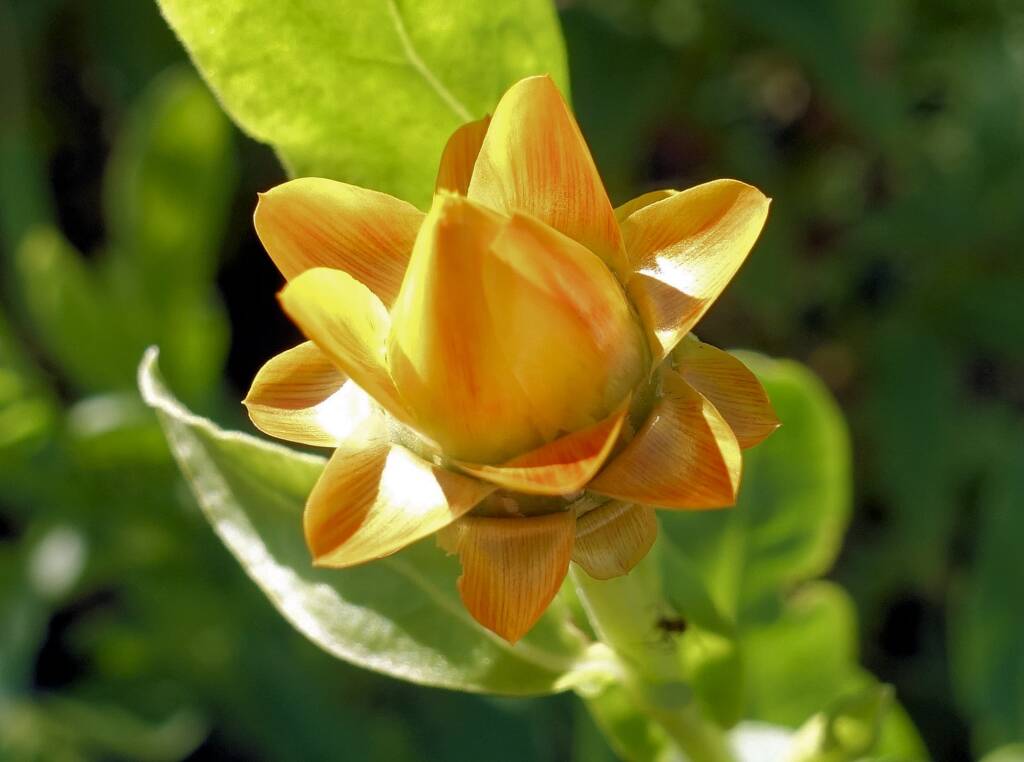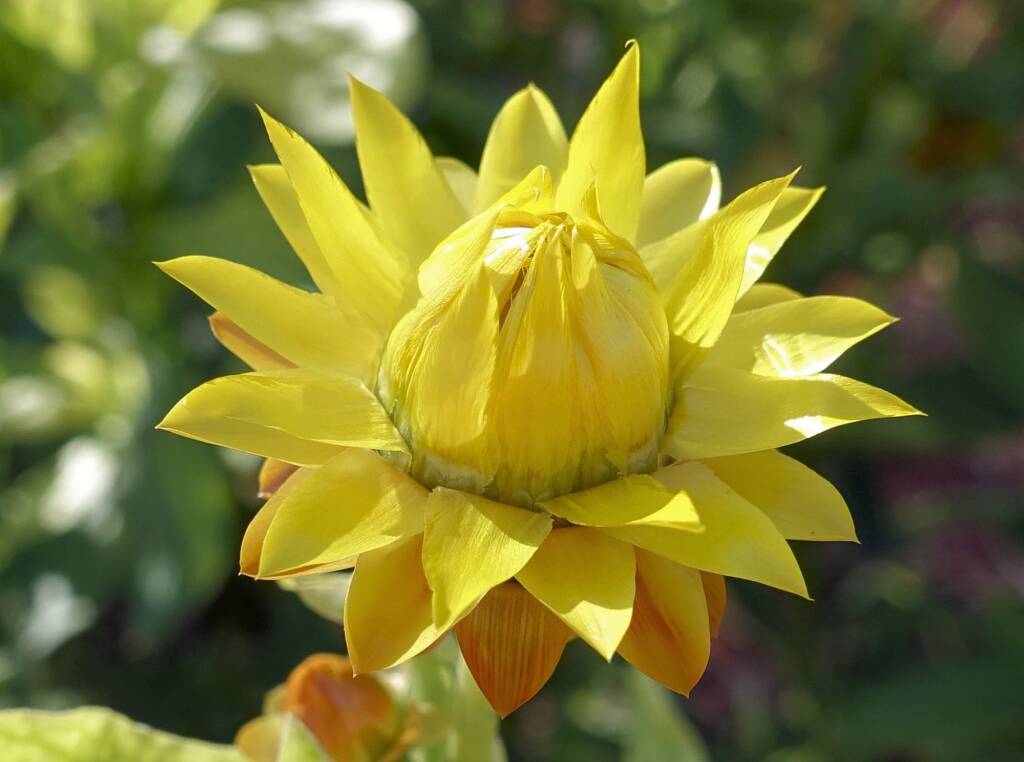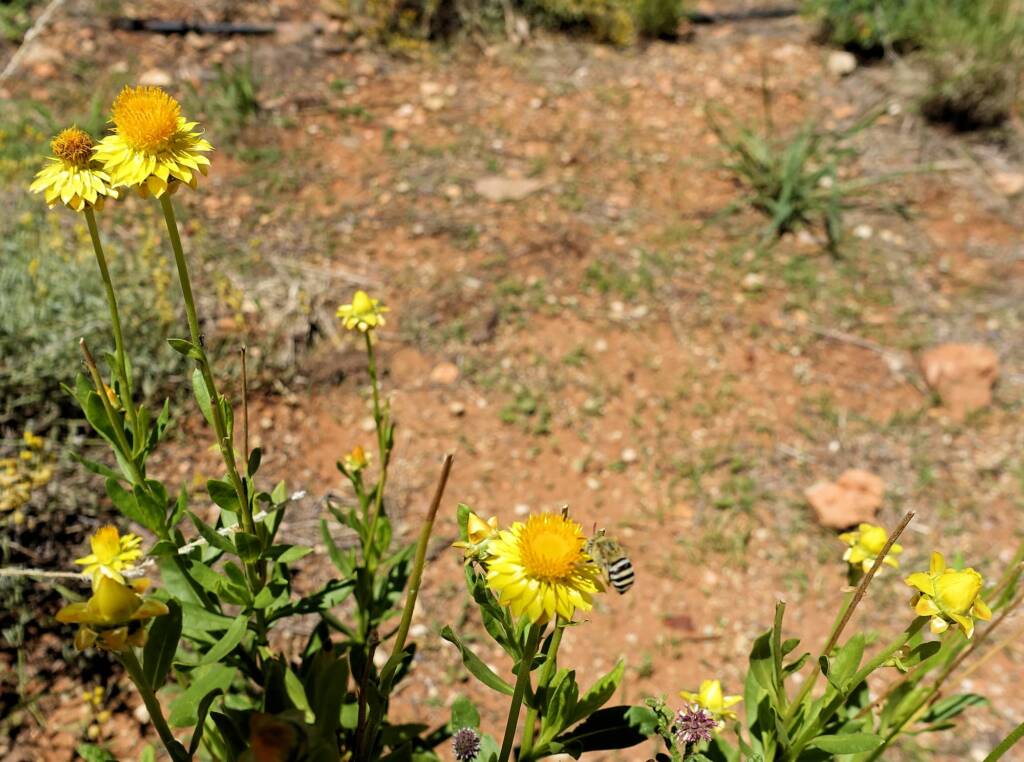Golden EverlastingInsects and Spiders
The Golden Everlasting (Xerochrysum bracteatum), formerly known as Helichrysum bracteatum, are a perennial daisy that are found growing throughout Australia. It has stiff strong flower heads that dry really well and are frequently used in dry floral arrangements.
It was given the name Bracteantha bracteata in 1991,2 when Arne Anderberg and Laurie Haegi placed the members that are known as strawflowers of the large genus Helichrysum into a new genus Bracteantha, and designated B. bracteata as the type species.3 However, they were unaware that Russian botanist Nikolai Tzvelev had already placed X. bracteatum in the new, and at the time monotypic, genus Xerochrysum the previous year.4
Xerochrysum bracteatum, Wikipedia (last visited July 8, 2022)1

This erect perennial plant with their distinctive papery bracts (resembling petals) are hairy and rough to the touch. They can be found growing across a variety of habitats from sub-alpine areas, down to rainforest margins and arid desert regions. The tiny seeds are dispersed by wind, and are found to germinate after fire and disturbed ground.

The Golden Everlasting are a food source for a variety of larvae of the lepidopterans (butterflies and moths), as well as the adult butterflies, hoverflies, beetles, grasshoppers and native bees (who are often seen on the flower heads).

Found growing on sandy and loamy soils, across large parts of Australia, in a range of habitats from woodland, forest, through to arid regions, the Golden Everlasting occurs in both annual and perennial forms, with varying growth habit from a prostrate to a tall plant of up to 1 metre in height. The leaves are oblanceolate to elliptic, large and varying from green to grey-green in colour.
- Scientific classification
- Kingdom: Plantae
- Clade: Tracheophytes
- Clade: Angiosperms
- Clade: Eudicots
- Clade: Asterids
- Order: Asterales
- Family: Asteraceae
- Genus: Xerochrysum
- Species: X. bracteatum
- Binomial name: Xerochrysum bracteatum
- Synonyms:
- Bracteantha bracteata
- Helichrysum bracteatum
- Helichrysum lucidum
- Helichrysum chrysanthum
Footnote & References
- Xerochrysum bracteatum, https://en.wikipedia.org/wiki/Xerochrysum_bracteatum (last visited July 8, 2022)
- “Bracteantha bracteata (Vent.) Anderb. & Haegi nom. superfl”. Australian Plant Name Index (APNI), IBIS database. Centre for Plant Biodiversity Research, Australian Government. Retrieved 21 March 2012.
- Wilson, Paul G. (2002). “Xerochrysum the correct name for the genus Bracteantha”. Australian Plants. 21 (173): 398.
FloraFlora in Australia Flora Index Acacia Anigozanthos (Kangaroo Paws) Annual Yellowtop Apium prostratum subsp. prostratum var filiforme Apple Bush (Pterocaulon sphacelatum) Australian Bluebell Australian Gossypium Banksia Batswing Coral Tree Billy Buttons Birdsville Indigo Blue Pincushion Bush Banana Callistemon Callitris drummondii (Drummond’s Cypress Pine) Calothamnus quadrifidus Cape Honeysuckle Cassia fistula (Golden Shower) Cattle Bush Common Heath Crotalaria Darwinia wittwerorum (Wittwer’s Mountain Bell) Daviesia oppositifolia (Rattle-pea) Desert Oaks Drumsticks Eremophila Eucalyptus Ficus Flannel Cudweed (Actinobole uliginosum) Georges Indigo Goatshead Burr (Sclerolaena bicornis) Golden Everlasting Goodenia Gossypium Grass and Grasses Grass Trees Grevillea Grey Germander Hakea Kapok Bush (Aerva javanica) Lambertia sp Leptospermum MacDonnell Ranges Cycad Maireana scleroptera Mexican Poppy Minnie Daisy Mistletoe Family Nardoo Native Apricot Nicotiana megalosiphon subspecies sessilifolia Nuytsia floribunda Orange Spade Flower Orchidaceae Parakeelyas (Calandrinia) Pebble Bush (Stylobasium spathulatum) Perennial Yellow Top Pink Everlasting Pink Rock Wort Poached Egg Daisy Portulaca Proteaceae Ptilotus Quandong Resurrection Fern Rosy Dock Ruby Saltbush Santalum Solanum Spike Centaury Spinifex Storkbill (Erodum cygnorum) Striped Mint Bush Sturt’s Desert Pea Sturt’s Desert Rose Tall Saltbush Tangled Leschenaultia Tar Vine Tribulus eichlerianus Upside-down Plant Urodon dasyphylla Variable Daisy Waratah (Telopea) Wertabona Daisy White Cedar (Melia azedarach) White Indigo White Paper Daisy Wild Passionfruit Wild Stock Woolly-Headed Burr Daisy Woolly Bush Yellow-keeled Swainsona
Flora & FaunaFauna Flora Fauna Flora Funga Glossary Funga Related Topics Scientific Classification Backyard Wildlife Floral Emblems of Australia Wildflowers

